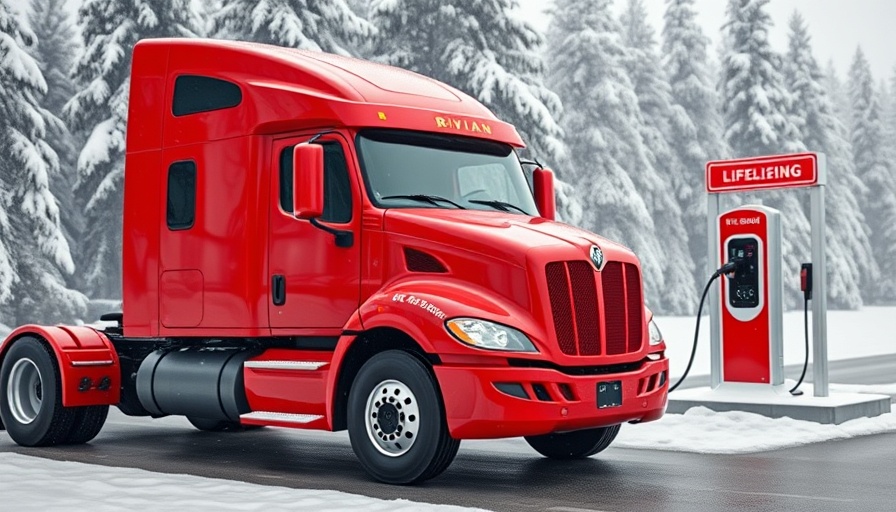
Rivian Faces Delivery Setbacks Amid Changing Economic Policies
Rivian, the electric vehicle manufacturer, recently announced a significant cut in its delivery guidance for the upcoming year. The company now expects to deliver between 40,000 and 46,000 electric vehicles (EVs) by the end of 2025, down from its previous estimate of 46,000 to 51,000 vehicles. This revision comes in the wake of President Trump's tariffs and other regulatory changes affecting the automotive industry.
Understanding the Impact of Tariffs on the EV Market
President Trump’s tariffs have put a strain on Rivian, which is not alone in feeling these economic pressures. Major automakers like Ford and General Motors have also revised their projections due to increased costs stemming from the new administration’s fiscal policies. Ford anticipates an additional $2.5 billion in costs this year related to these tariffs, while GM has projected a staggering $5 billion burden.
The Company’s Financial Health in Light of Challenges
Despite the revenue challenges, Rivian reported a gross profit of $206 million for Q1 2025 from 8,640 deliveries, which was a significant achievement and met a crucial milestone for unlocking about $1 billion in funding from Volkswagen Group. However, the company posted a net loss of $541 million, indicating that while the company is generating revenue, its expenses are still a major concern.
The Future of Rivian: A Diverging Path
The road ahead appears rocky, not just for Rivian but for the entire EV market. As demand projections waver under the shadow of government policies, the potential removal of the $7,500 federal tax credit for EVs could further dampen sales. Rivian is anticipating its more affordable R2 SUV model to gain traction, yet this release is not scheduled until 2026, prolonging challenges in maintaining growth.
Lessons in Business Adaptation and Strategy
Rivian's experiences serve as a case study in navigating economic uncertainty. With its latest earnings report highlighting risks related to government regulations and tariffs, it becomes evident how external factors can influence corporate strategy. Rivian's decision to increase capital expenditure guidance to between $1.8 billion and $1.9 billion is a proactive approach in anticipation of possible challenges ahead.
Broader Implications for the Tech and Automotive Industries
With the EV market still in a growth phase, Rivian's situation underscores the vulnerabilities faced by tech-driven businesses in volatile political landscapes. As more automakers shift towards electric models, the ongoing trade and regulatory battles with the government may redefine the competitive landscape across various tech sectors, signaling a need for adaptive strategies.
Conclusion: Staying Informed for the Future
Rivian's journey illustrates the intricate relationship between government policy and business viability in the tech sector. For consumers, investors, and industry observers alike, understanding the repercussions of these developments is crucial. Keep abreast of the latest tech news and updates, as they present opportunities to engage with the evolving automotive landscape.
If you're interested in deeper insights into how these factors affect the future of electric vehicles, stay connected with tech news platforms for ongoing analysis.
 Add Row
Add Row  Add
Add 



Write A Comment